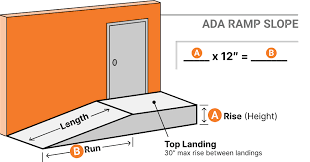An Introduction to Area Chart Data Visualization
At a time when data is the fuel that drives decision-making in various sectors, effectual data visualization has become a fundamental skill to possess. By creating visually impactful representations of information, data visualization allows complex data sets to be understood easily, facilitating effective communication. Be it in market research, finance, or public health, data visualization plays an integral role. In this article, we will explore one of the exciting tools of data visualization, namely the area chart.
Understanding the Concept of Area Chart Data Visualization
An area chart, also known as an area graph, displays quantitative data visually. This chart type is akin to a line graph but has a filled area between the axis and line, perking up the visual impact and depicting the total value across a progression. The area chart data visualization technique is particularly efficacious in demonstrating trends over time.
They are primarily used for comparing two or more categories. The various colors or shades in the chart represent these categories. The vertical axis typically represents the measurements, while the horizontal axis symbolizes the time period.
Area charts come in two types: Simple (also known as a plain area chart) and Stacked. While both of these types are effective in the representation of data changes over time, they each have their unique uses and interpretation.
Understanding these charts is straightforward. The data categories are represented using different colors, and viewers can easily distinguish between them. The stacked chart provides an additional layer of information by showing the cumulative total of the segments, thereby offering a comprehensive understanding of the data.
Steps to Create Simple and Stacked Area Charts
To create a simple area chart, first, data points are plotted on a Cartesian plane. Then these points are connected with a line, forming a polygon. Finally, the area enclosed by this polygon is filled with a color or pattern to visually represent these data points.
In case of a stacked area chart, the procedure is similar but requires an extra step. The first category of data is plotted just like in a simple area chart. Then, the next category is plotted on the top of the first one, and the process continues until all categories are included.
The visual result is a layered graph which, in addition to individual category trends, also shows the cumulative total. The differences in data among various categories are conspicuous due to the contrasting colors used for each category.
Although it might seem complex, creating an area chart is quite straightforward with modern data visualization tools. A keen understanding of your data and a clear objective are all that are required to create effective area charts.
Making the Most Out of Area Charts for Data Analysis
Area charts play a significant role in data analytics. They provide a visually comprehensive way to examine data. By facilitating the comparison of different sets of data, area charts aid in finding correlations and patterns, thereby helping in effective decision-making.
It is crucial to keep the data clean and organized while using area charts. Outliers, or data points that are significantly different from others, should be cautiously handled, as they could potentially skew the interpretation of the results.
The utilization of a suitable color scheme is critical in enhancing comprehensibility. The colors should be distinguishable enough for the viewer to easily differentiate between the categories. Consistent use of color across multiple charts relating to the same data set can further boost understanding and operational efficiency in data analysis.
Altogether, area charts are a potent tool in data visualization, and their judicious use can lead to comprehensive data analysis and informed decision-making. The ability to understand and effectively use area charts is an invaluable asset in today’s data-driven world.
 Lifeyet News Lifeyet News
Lifeyet News Lifeyet News





